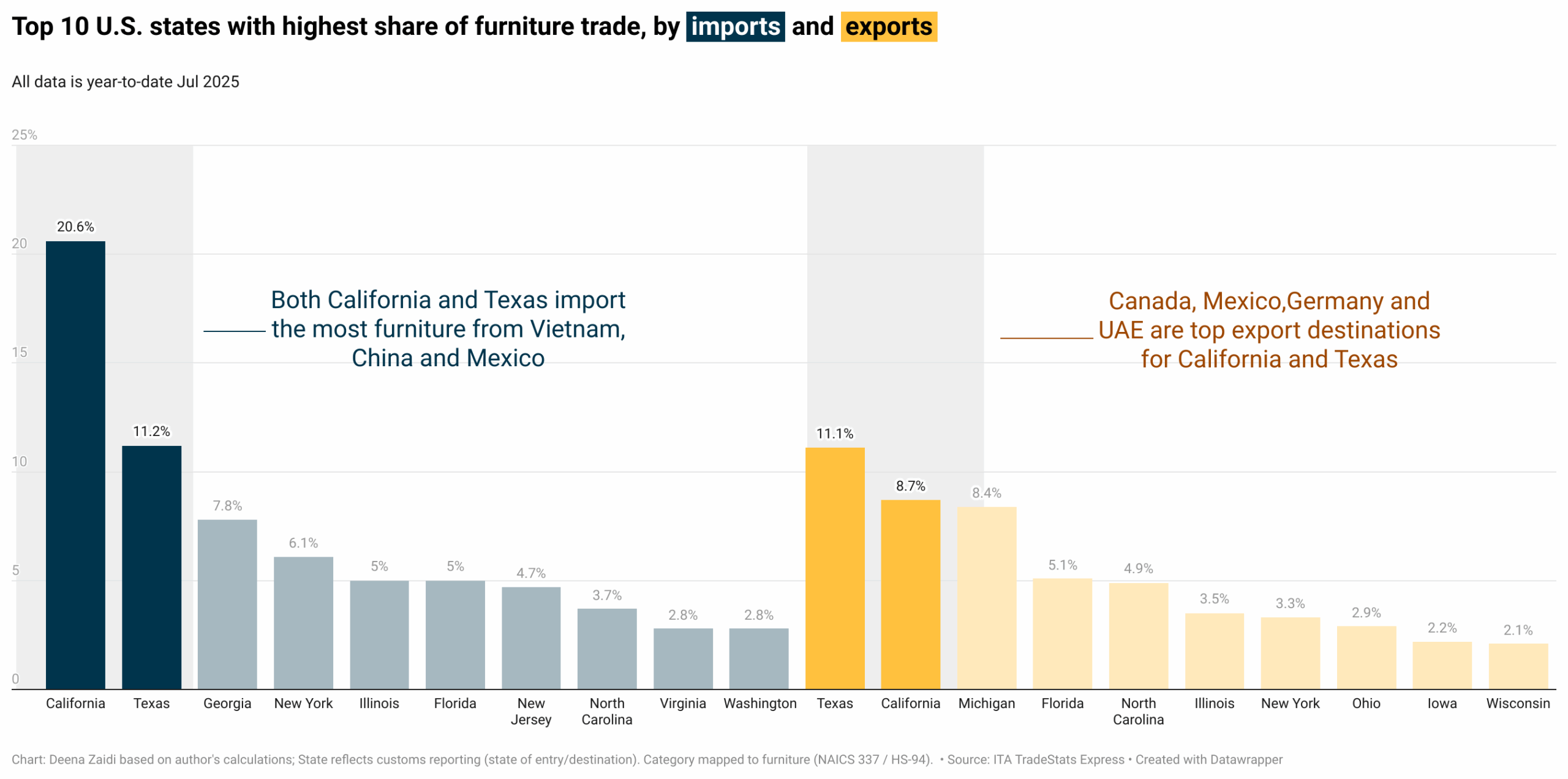President Trump has signed an executive order imposing new tariffs on lumber and furniture, blaming America’s persistent goods trade deficit for hurting domestic manufacturers.
The move follows a Commerce Department report that found rising wood product imports were weakening the U.S. economy—undercutting mills, disrupting supply chains, and reducing capacity utilization across the wood industry.
So far, the U.S. demand for wood and wood products remains strong, driven by construction, furniture manufacturing, and paper production.
Tariff rates:
• Softwood: 10%
• Kitchen cabinets: 25%, rising to 50% on Jan. 1, 2026
• Bathroom vanities: 25%, rising to 50% on Jan. 1, 2026
• Upholstered furniture (sofas, chairs, sectionals): 25%, rising to 30% on Jan. 1, 2026
The Section 232 tariffs apply to all countries except the U.K., European Union, and Japan, whose trade agreements cap these duties at 10%, 15%, and 15%, respectively.
They will not stack on top of reciprocal tariffs or International Emergency Economic Powers Act (IEEPA) duties already in place for Brazil (40%), India (25%), Canada (10%), or Mexico (10%).
However, they will stack on top of China’s existing 20% IEEPA tariff and Section 301 duties ranging from 7.5% to 25%. On Friday, the president said he may impose an additional 100% levy on all Chinese imports beginning Nov. 1.
